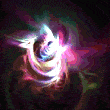

Welcome to the Growery Message Board! You are experiencing a small sample of what the site has to offer. Please login or register to post messages and view our exclusive members-only content. You'll gain access to additional forums, file attachments, board customizations, encrypted private messages, and much more!
|
 Some of these posts are very old and might contain outdated information. You may wish to search for newer posts instead. Some of these posts are very old and might contain outdated information. You may wish to search for newer posts instead.
|
 Dr. Penguin Dr. Penguin


Registered: 05/19/08
Posts: 1,036

|
 Re: doubts (moved) Re: doubts (moved)  [Re: BudZilla] [Re: BudZilla]
#197125 - 02/18/09 06:51 AM (16 years, 1 month ago) |
|
|
Why blue LED light? I don't know if I would trust that. Check out this diagram for why:


Cartinoids generally are responsible for signaling dark length mediated photo-responses, as you can see in the chart, they stop absorbing around the green spectrum but would absorb any blue light you bring into the room.
|
 Yrat Yrat
Happy Planting


Registered: 04/20/08
Posts: 886
Last seen: 11 years, 2 months
|
 Re: doubts (moved) Re: doubts (moved)  [Re: Yrat] [Re: Yrat]
#197160 - 02/18/09 11:40 AM (16 years, 1 month ago) |
|
|
after digging a little bit, i found that it is phytochrome that is responsible for detecting day length in plants. phytochrome absorbs in the red and far red, so blue light would indeed be ideal for working in a dark grow room. just make sure it's not a bright white LED, which can appear blue from such high intensity, but covers the entire spectrum.

--------------------
 "Prohibition will work great injury to the cause of temperance. It is a species of intemperance within itself, for it goes beyond the bounds of reason in that it attempts to control a man's appetite by legislation, and makes a crime out of things that are not crimes. A Prohibition law strikes a blow at the very principles upon which our government was founded." - Abraham Lincoln "Prohibition will work great injury to the cause of temperance. It is a species of intemperance within itself, for it goes beyond the bounds of reason in that it attempts to control a man's appetite by legislation, and makes a crime out of things that are not crimes. A Prohibition law strikes a blow at the very principles upon which our government was founded." - Abraham Lincoln
"There are a thousand hacking at the branches of evil
to one who is striking at the root"
~ Henry D. Thoreau
Strike The Root

|
 Dr. Penguin Dr. Penguin


Registered: 05/19/08
Posts: 1,036

|
 Re: doubts (moved) Re: doubts (moved)  [Re: Yrat] [Re: Yrat]
#197175 - 02/18/09 01:05 PM (16 years, 1 month ago) |
|
|
It was believed that phytochrome was the only mechanism of photoperiodic response for a long time, it has just recently been discovered that cryptochrome plays a role as well. Cryptochrome absorbs light in the blue spectrum while phytochrome is predominantly red-orange. Here is a recent study that identifies the involved chemical pathways:
Quote:
* Regulation of Photoperiodic Flowering by Arabidopsis Photoreceptors
* Author(s):Todd Mockler, Hongyun Yang, XuHong Yu, Dhavan Parikh, Ying-chia Cheng, Sarah Dolan and Chentao Lin
* Source: Proceedings of the National Academy of Sciences of the United States of America, Vol. 100, No. 4 (Feb. 18, 2003), pp. 2140-2145
* Published by: National Academy of Sciences
* Stable URL: http://www.jstor.org/stable/3138498
Abstract
Photoperiodism is a day-length-dependent seasonal change of physiological or developmental activities that is widely found in plants and animals. Photoperiodic flowering in plants is regulated by photosensory receptors including the red/far-red light-receptor phytochromes and the blue/UV-A light-receptor cryptochromes. However, the molecular mechanisms underlying the specific roles of individual photoreceptors have remained poorly understood. Here, we report a study of the day-length-dependent response of cryptochrome 2 (cry2) and phytochrome A (phyA) and their role as day-length sensors in Arabidopsis. The protein abundance of cry2 and phyA showed a diurnal rhythm in plants grown in short-day but not in plants grown in long-day. The short-day-specific diurnal rhythm of cry2 is determined primarily by blue light-dependent cry2 turnover. Consistent with a proposition that cry2 and phyA are the major day-length sensors in Arabidopsis, we show that phyA mediates far-red light promotion of flowering with modes of action similar to that of cry2. Based on these results and a finding that the photoperiodic responsiveness of plants depends on light quality, a model is proposed to explain how individual phytochromes and cryptochromes work together to confer photoperiodic responsiveness in Arabidopsis.
Here also is a graph from a study done in the late forties involving floral repression at differing spectra:

The grey band indicates the blue area of the spectrum.
| |
|
|